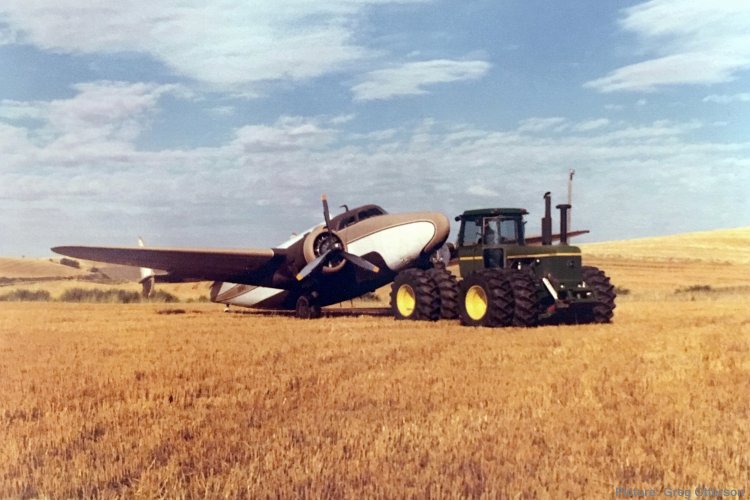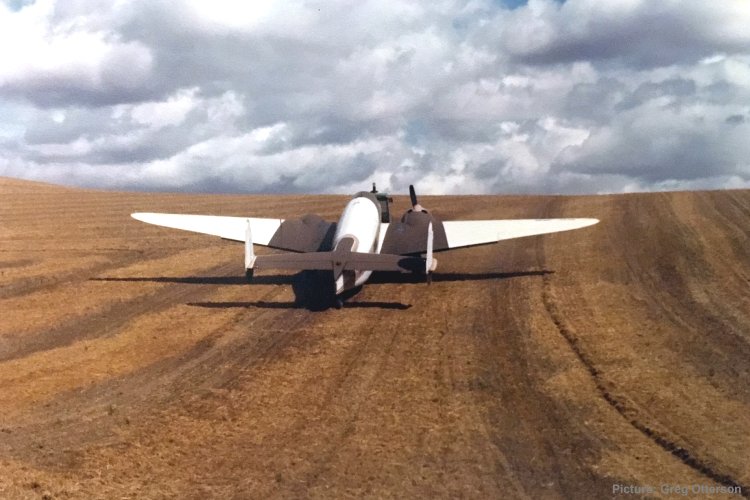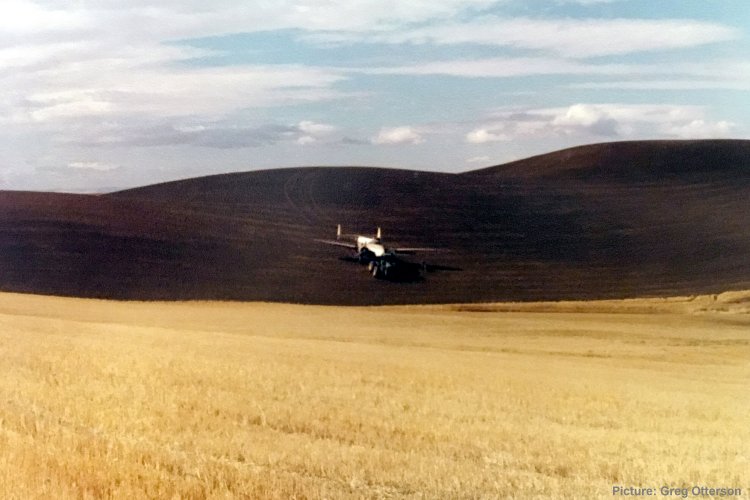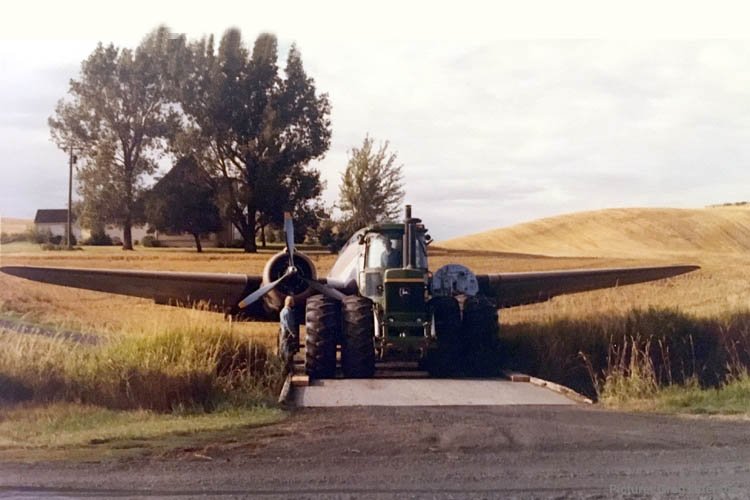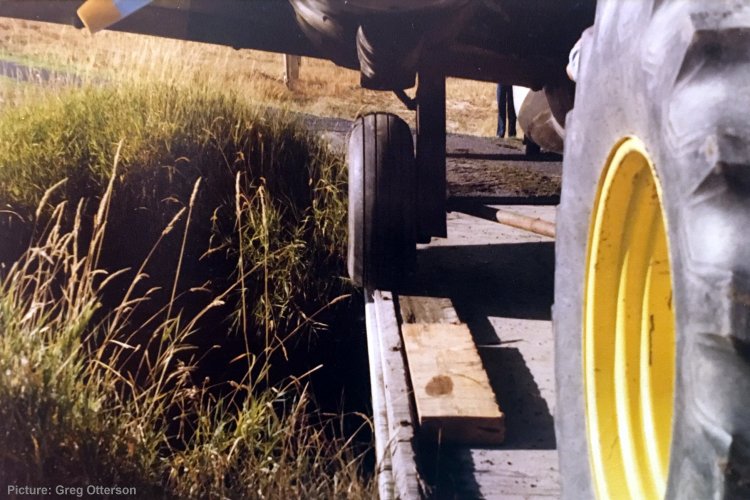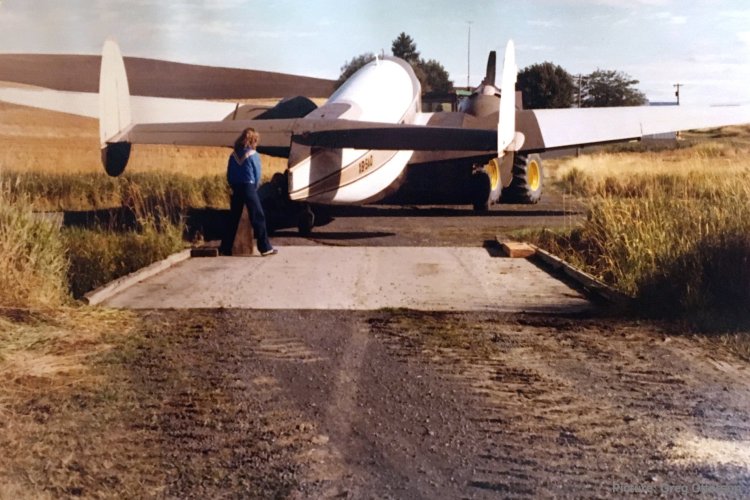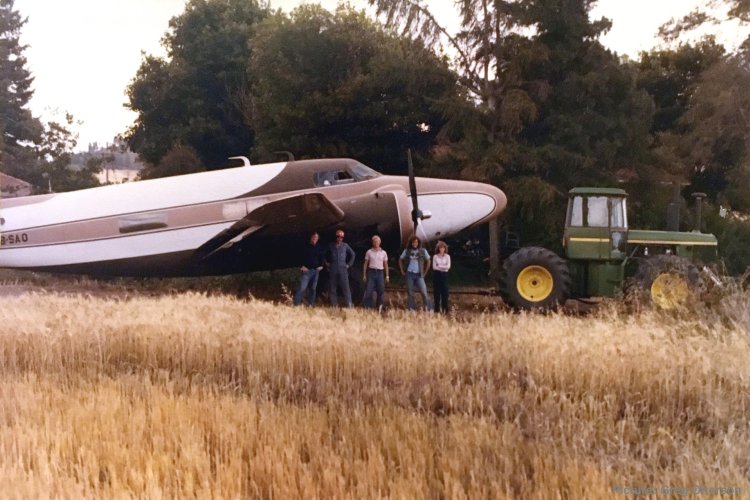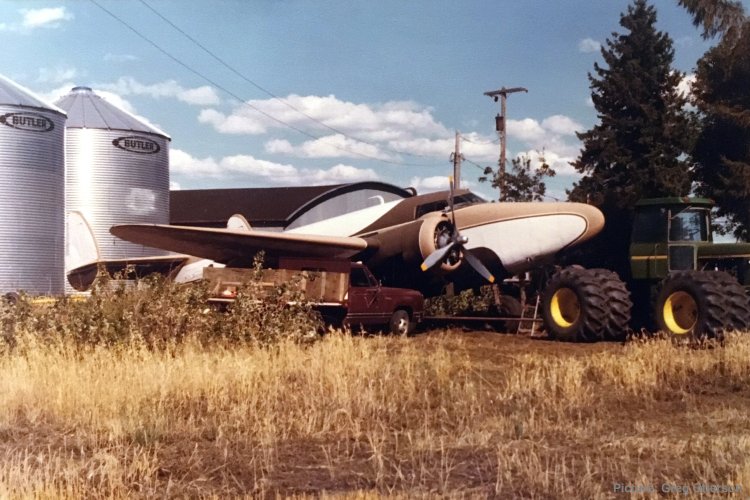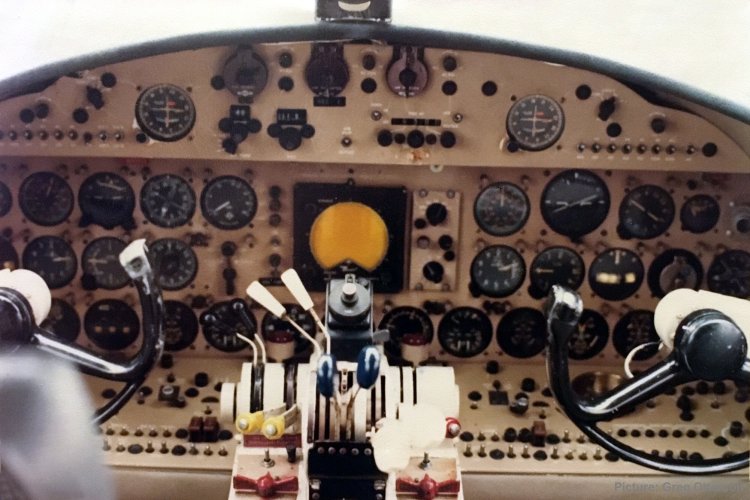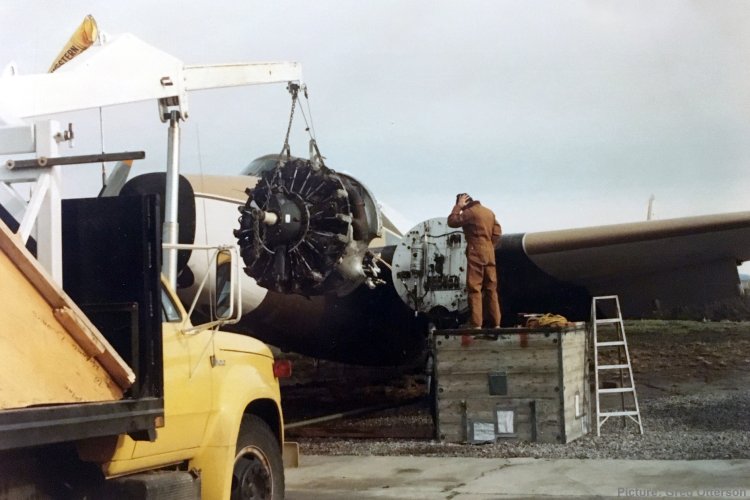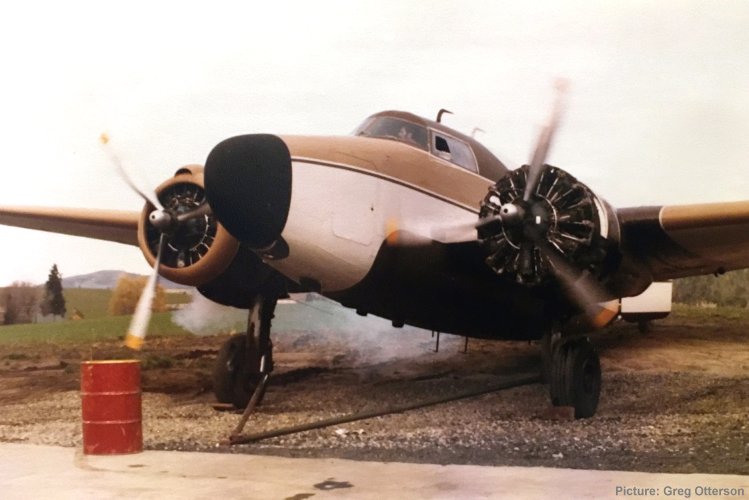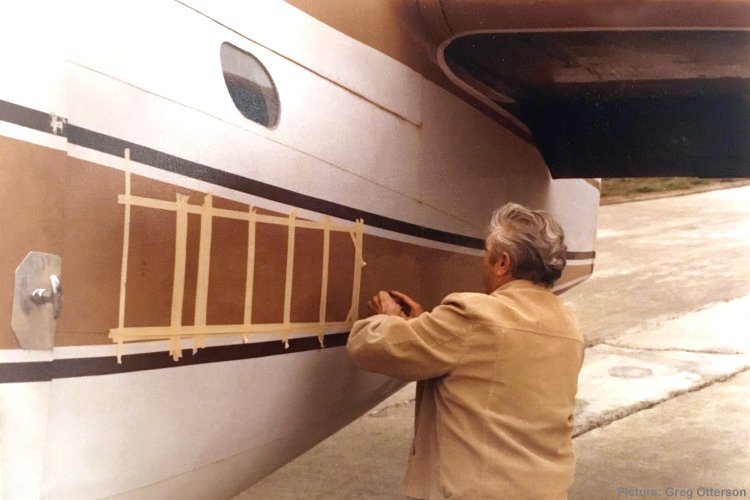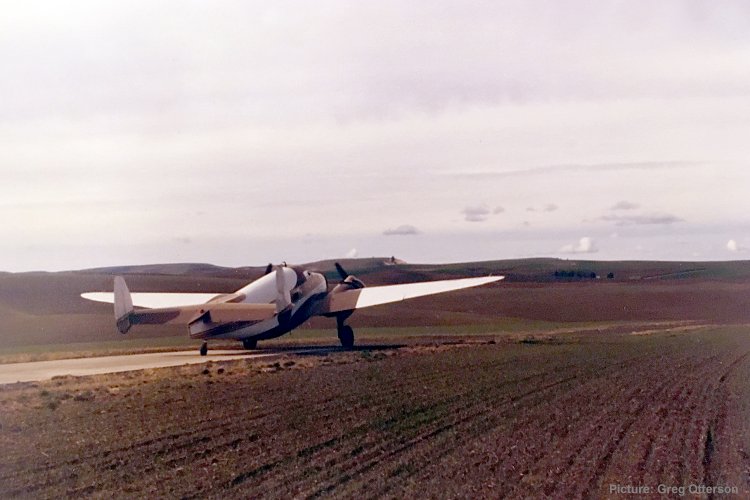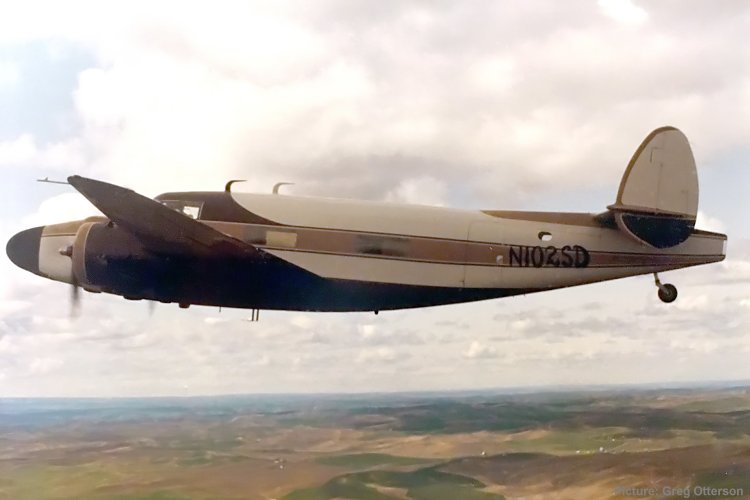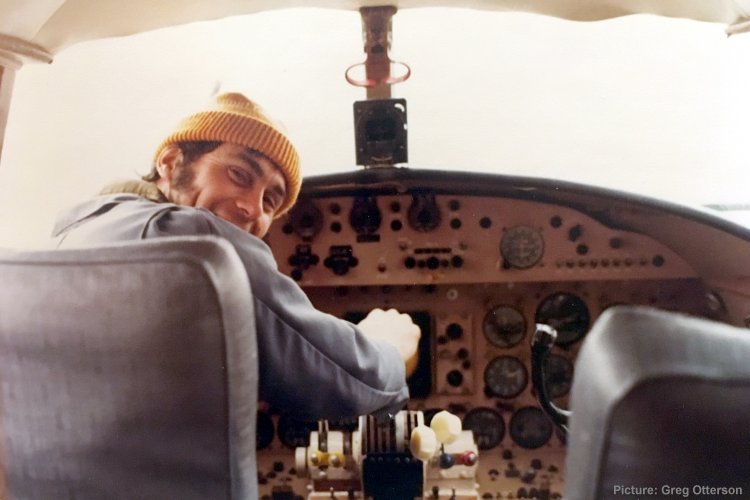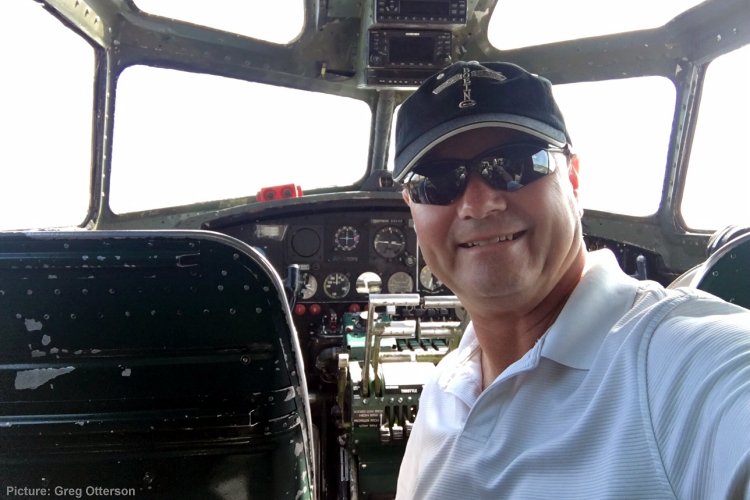|
In September
1947, a former RAAF Lockheed Lodestar came on to the Australian Register
as VH-GRB, the registration comprising the initials
of its owner, Gregory Richmond Board. During 1947-48 the aircraft operated
several migrant flights from Europe to Australia. In August 1950, the
aircraft was sold to Overland Air Services Pty Ltd of Condoblin, NSW as
VH-OAS, and operated on airline services to country
towns in NSW. These services continued until April 1952 when the company
went into voluntary liquidation.
Subsequently the Lodestar was exported to the United States where it went
through the hands of several operators. By April of 1967, the aircraft
was on the Mexican Register as XB-SAO. In August 1974, XB-SAO suffered
engine trouble and landed unexpectedly at Pullman-Moscow Regional Airport
in Washington State, USA. Although it received several visits from its
owners or their representatives, the Lodestar was effectively abandoned.
During its five-year stay, it became known locally as the Marijuana
Hauler even though there was no official evidence of the aeroplane
having hauled the illegal herb. It is true that many Lodestars did cross
over to the dark side so it may have been guilt by association. In September
1979, several locals decided to try to save the aeroplane from the morass
of legal complications which old abandoned aeroplanes seldom survive.
Greg Otterson takes up the story.
In 1979,
I helped a good friend of mine, Dale Schoepflin, “liberate” this Lodestar
five years after it was abandoned by suspected drug dealers at the
Moscow/Pullman airport in Pullman, Washington. In 1974 it made an
emergency landing there after having an inflight engine failure. After
it was abandoned there, it became known as the Marijuana Hauler.
Over the next several years vandals broke into it and did some minor
damage. The poor Lodestar was deteriorating and becoming an eyesore
after it was parked out on the grass.
Dale, a local crop duster and aircraft mechanic, and I were out looking
at it one day and trying to figure out what could be done to save
it. Our conclusion was to somehow get it to his crop duster strip
about 17 miles away, but it was far beyond the ability to ferry it.
Plus, we didn’t have ownership, so we looked into what it would take
to get salvage rights.
One day we took an air compressor out and wanted to see if the tires
would hold pressure. Sure enough, they did, and then we starting putting
our plan into gear. Between the Moscow/Pullman airport and Dale’s
private airport are 17 miles of rolling wheat fields known as the
Palouse. Dale crop dusted a lot of those farm fields and knew most
of the farmers so we started flying over the possible routes to see
where we could tow the Lodestar to get it to Dale’s strip.
All of the farmers gave permission for us to cross their fields as
it was just after harvest season. The next step was to have an off
the record discussion with the airport manager about the Lodestar
“disappearing”. While he couldn’t give an official response, he did
lament how it was becoming an eyesore and wished it wasn’t his problem
anymore.
With that, we went to Dale’s shop and built a tow bar. Dale’s cousin
said we could use his big eight-wheeled articulating John Deere tractor.
After plotting the course and measuring several bridges we had to
cross, we got up early in the morning in early September 1979 with
tractor, pickup, and motorcycle for scouting ahead of the path, and
off we started.
The harvested wheat fields were solid enough to support the Lodestar’s
weight as were the several small bridges we had to cross. A couple
of the bridges were somewhat of a challenge with the width being the
same as the track of the main gear. We put down large planks to keep
the tires from rolling off, and slowly made it across.
It took about eight hours to go the 17 miles and the trip went as
planned. The Lodestar’s disappearance made the headlines in the local
papers under the headline of “Marijuana Hauler Disappears” with various
stories and theories about what happened to it.
In the meantime, Dale started the paperwork process to get ownership,
which he did after a couple of years. He hung a new engine on it,
got it airworthy, and then in 1984 traded it to a guy in New Mexico
for a couple of single engine Cessnas. It hadn’t flown yet, so the
new owner came up to take possession and do the flight testing. The
Lodestar hadn’t flown for ten years, and Dale’s airstrip was only
1,800 feet long. He and Dale flew that Lodestar out of his short airstrip
and over to the Moscow/Pullman Airport to give it some shakedown flights
before the trip to New Mexico. It was given a new registration number,
N102SD.
After several successful flights, the Lodestar took off and headed
south. We flew formation with it for the first 15 minutes of the fight
and took some air to air photos.
Another funny story from the time when the aircraft was on Dale's
farm. Dale and I used to go out in the evenings and fire up the Lodestar’s
right engine, switch on the instruments and cockpit/cabin lights and
play like a couple of kids with their favorite toy.
Since the Howard 250 conversion, it was quite the plush aircraft with
executive seating, a lavatory, cockpit door, full IFR instrumentation,
radar, and even a lighted fasten seatbelt sign with a bell that we
enjoyed playing with. Fortunately, the vandals had not done any damage
to the cockpit other than a broken side window.
On the panel were two switches with three positions and corresponding
green, amber, and red lights and a large placard with the letters
JATO (jet assisted takeoff). Green was Test position, amber was Arm,
and red was Fire. Dale and I had looked all over the Lodestar and
found hard points in the bottom of each wing where we assumed the
JATOs should have been mounted.
Several times in the evenings when we fired up the right engine and
played around with everything in the cockpit, we decided to see what
would happen if we flipped the JATO switches. We put them in the Test
position and the green light lit up. Then we moved the switches to
the Arm position and the amber light lit up. We looked at each other
with sly grins and asked each other if we should move the switches
to the fire position, but neither of us was brave enough to do it
even though the rockets were not mounted on the wings - or so we thought.
One day I had a call from Dale. He said to come over right away so
he could show me something. When I arrived, he had me crawl under
the belly near the cabin door, and then I could see them.....two JATO
rockets mounted with yellow tags indicating they were loaded and ready
to fire. Both of us shuddered to think about how close we had come
to firing those rockets. Once fired, there is no stopping them. They
will fire continuously for 1-2 minutes. They were part of the Howard
250 conversion and intended to be used in the event of engine failure
on takeoff.
Had we fired them, we might have gotten airborne with the good right
engine and stayed airborne long enough to get to a lighted airport.
At least that was what Dale and I used to optimistically debate. Realistically,
neither of us would have likely survived the crash that probably would
have followed.
Dale passed away about three years ago. He was an aviator extraordinaire
and the Lodestar was one of his many notable aviation legacies. |
|


